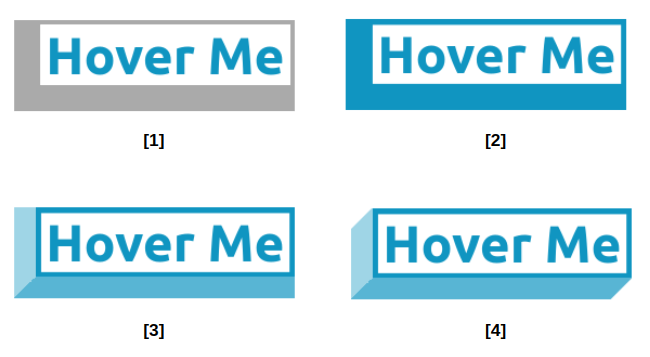
No matter how tough the job market may seem, there are always ways you can stand out in the crowd. What if we told you there’s an easy way to make yourself memorable for any job you applied for? If you’re hoping to be the next president or CEO, we might not be able to help. But for the rest of us, getting a personal message in front of the hiring managers is the ticket.
How can we do that? The simple answer is to create your own online resume website. A personal portfolio gives you the ultimate flexibility to choose what to say and how to say it. The best part? Not many job applicants have figured out this trick–or at least, not many have bothered to do it.
Here’s a look at why every job seeker should have their own website. Plus, we’ll look at some things you’ll want on it and how to put one together easily.
Why Should Every Job Seeker Have a Personal Website?
Table of Contents
The traditional documents you submit during a job search each have their purposes. First, the cover letter introduces you to your potential employer and makes that vital first impression. Its purpose is to set the hook.
Your resume or CV is also important. It starts reeling that big fish in. It provides the statistics of your training, education, and work background. Beyond an occasional interesting data point, employers can’t tell much about you from either of these documents. What they do, however, is prove whether or not you’re qualified for the position in question.
The problem for hiring managers, then, is obvious. Many jobs have over 100 applicants–some have thousands. Your cover letter and resume will prove or disprove if you meet the qualifications, but it might still mean that dozens or hundreds of applicants are left with you.
Everything left in the hiring process comes down to soft skills–are you really talented, and are you a person people want to work with? How do you show a hiring manager or future coworker that you have real skills? That you can communicate clearly, and work well with others?
In some fields, it’s very common to create online portfolio websites. These are usually associated with artists, photographers, or video producers. In these fields, just having a resume isn’t enough. Anyone looking to hire you needs to see the work you are capable of, not just where you went to school and where you worked last.
However, you can apply this same logic to every job applicant in every field. As we all know from experience, a website can be anything. It can be a gallery of photographs, a writer’s portfolio of best works, or a sampling of successful business projects with graphs and charts. However you dream it, you can make it on the web.
When you think about it, not putting such a uniquely personal and customized item in front of a hiring manager is silly. If you want the job, an online website with a personal introduction is a surefire way to get an in-person interview. Anything you can do to tip the odds in your favor is worthwhile, especially if it’s a proven and effective tactic.
Statistics seem to bear this out. Hiring managers want to see more personal portfolios, and they regularly admit that they are memorable and catch their attention. But only a handful of applicants bother to put one together.
What Should a Personal Website Include?
So, we can agree that an online website is an important part of the job search process, but what does it need to include? Unfortunately, there’s no easy answer since all industries and job requirements differ. But if your site has one overarching theme, it should be, “What does the hiring manager want to see?”
Keep in mind that if an employer has come to your site, they’ve probably already had their interest piqued. Your job is then to seal the deal and not mess anything up.
Start by creating a mission or a focus for your site. Think about what you need to accomplish with it, who will see it, and how you intend to communicate with them. For most job applicants, this will include that you want to prove you are qualified for the job, good at what you do, and easy to work with.
Think about what your hiring manager would most like to see from an applicant. Can you share any work projects that prove you would be exceptional in this new job? At the very least, you can show that you can create a beautifully designed website that is free of errors! If you include examples of clear communications (writing, infographics, videos, or whatever it is you do) and some personal touches that show a little personality, then you’ll be on the right track.
Whatever you do, don’t overlook the small stuff. Spelling, grammar, and dead links matter! Keep your site design clean, simple, and professional. Don’t post things you don’t want an employer or potential employer to look at. Many professionals make multiple websites, each with its own focus and purpose.
Finally, make sure your website includes a follow up action of some sort. For a job applicant, it might be as simple as having your contact information at the bottom of each page. This way, if they’re inspired to call you in for an interview, it’s easy for them to do so.
How Do You Make a Website?
If all of this has you signing up for an HTML web-building course, hit pause on that. Making a website has never been easier, thanks to web-based design tools.
Pixpa has over 150+ professionally-designed templates to choose from. You can create a professional website easily and include any element you want – all with drag-and-drop ease of creation.
When compared to other website builders out there, Pixpa gives you more options and more flexibility. As you create online portfolio elements, you can progressively get more advanced. The possibilities are endless on the platform, and integrating complex content is much easier than doing it elsewhere.
However, the best thing about Pixpa is the ability to customize the content to meet your needs. You’ll have access to beautiful, professionally-made templates. But you also have the power to change anything quickly and easily to make it your own.
Conclusion
If you’re in the job market, there’s no reason not to have a personal website. It can be a portfolio or a simple introduction and polished application. But the ultimate goal is to provide you with a unique product that your potential employers will enjoy and remember. Once they’ve clicked your link, there should be no doubt that you’re a superstar with technology. You can build your own beautiful website, and you can communicate effectively. That’s an excellent place to start with a new employer, don’t you think?






